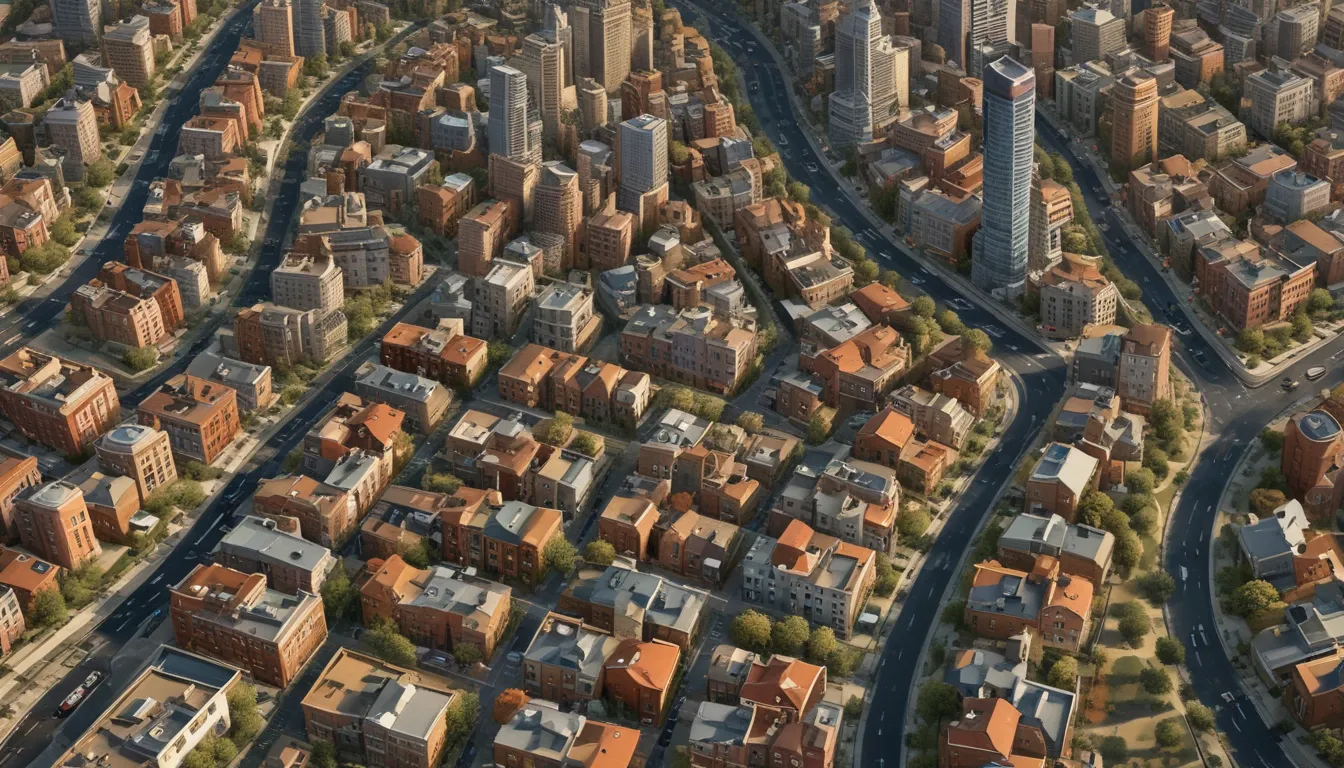A Note About Images: The images used in our articles are for illustration purposes only and may not exactly match the content. They are meant to engage readers, but the text should be relied upon for accurate information.
As urban populations continue to expand, the phenomenon of urban sprawl has become a prominent feature in cities worldwide. The unchecked growth of urban areas has far-reaching consequences on the environment and quality of life. In this article, we will explore the extraordinary facts about urban sprawl, shedding light on its impacts and the importance of developing sustainable and livable cities.
The Definition of Urban Sprawl
Urban sprawl is the rapid and unplanned expansion of urban areas, resulting in the spread of development to surrounding rural or undeveloped land. This phenomenon lacks a centralized plan or design, leading to sprawled-out developments that can cause various issues for both residents and the environment.
Impacts on Habitat Destruction
One significant consequence of urban sprawl is the destruction of natural habitats. As urban areas expand, they encroach upon wildlife habitats, leading to the loss of biodiversity and disruption of ecosystems. This hinders the ability of wildlife to thrive and can have long-lasting effects on the environment.
Traffic Congestion and Air Pollution
The expansion of cities due to urban sprawl results in longer commuting distances for residents. This, in turn, contributes to increased traffic congestion and air pollution. The reliance on private vehicles as public transportation systems become insufficient exacerbates these issues, leading to environmental and health concerns.
Inefficient Land Use
Urban sprawl promotes the inefficient use of land. With development spread out over a larger area, there is a greater demand for infrastructure and public services, leading to inefficiencies in land use. This inefficiency can strain resources and result in higher costs for maintaining and expanding services, ultimately impacting the cost of living for residents.
Impact on Community Cohesion
The spread-out nature of urban sprawl can negatively impact community cohesion. As cities expand, there may be a loss of community identity and a decrease in social interaction among residents. This can lead to a sense of isolation and detachment within neighborhoods, affecting the overall well-being of communities.
Deterioration of Air and Water Quality
The increased use of vehicles in urban sprawl areas, coupled with the expansion of industrial zones, contributes to the deterioration of air and water quality. Higher levels of pollution can have significant health implications for residents and further strain environmental resources.
Decline of Agriculture and Open Spaces
The conversion of agricultural land and open spaces into urban areas diminishes the availability of fertile land for farming and limits opportunities for outdoor recreational activities. This loss of green spaces can have detrimental effects on the environment and diminish the quality of life for residents.
Solutions for Sustainable Development
Addressing urban sprawl requires a multi-faceted approach that prioritizes sustainable development practices. Promoting compact and connected communities, investing in public transportation, protecting natural areas, and adopting smart growth strategies are essential steps in mitigating the negative effects of urban sprawl.
Role of Urban Planning
Urban planning plays a vital role in addressing urban sprawl by advocating for compact development, preserving green spaces, encouraging mixed land-use development, and creating sustainable transportation networks. By incorporating these principles into urban planning efforts, cities can work towards creating vibrant, livable, and environmentally-friendly urban environments.
Conclusion: Navigating the Challenges of Urban Sprawl
In conclusion, urban sprawl presents a complex set of challenges that require careful consideration and proactive solutions. By understanding the impacts of unchecked urban growth, we can work towards developing sustainable and inclusive cities that balance economic growth with environmental conservation and social equity. Through collaborative efforts between policymakers, urban planners, and citizens, we can create communities that thrive in harmony with the natural world.
Frequently Asked Questions
-
What is urban sprawl?
Urban sprawl refers to the uncontrolled and unplanned expansion of urban areas into surrounding rural or undeveloped lands. -
What are the main causes of urban sprawl?
The main causes include population growth, increased automobile dependency, lack of comprehensive urban planning, and the desire for larger homes and access to green spaces. -
How does urban sprawl impact the environment?
Urban sprawl leads to habitat loss, increased pollution, higher carbon footprint, and fragmentation of ecosystems. -
What are the social impacts of urban sprawl?
Urban sprawl can lead to social isolation, reduced community cohesion, longer commutes, higher infrastructure costs, and disparities in access to amenities. -
Can urban sprawl be reversed?
While challenging, implementing smart growth policies, promoting compact development, and preserving green spaces can help mitigate urban sprawl effects. -
How can individuals combat urban sprawl?
Individuals can contribute by choosing compact neighborhoods, using public transport, supporting local planning, and advocating for sustainable development. -
What is the role of urban planning in addressing urban sprawl?
Urban planning is crucial in promoting sustainable practices, preserving green spaces, and creating connected communities to address urban sprawl challenges.
As we navigate the complexities of urban sprawl, it is essential to prioritize sustainable development practices that promote harmony between urban growth and environmental conservation. By working together towards creating resilient and inclusive cities, we can pave the way for a brighter and more sustainable future for generations to come.






